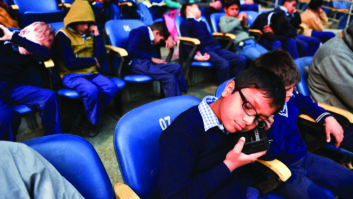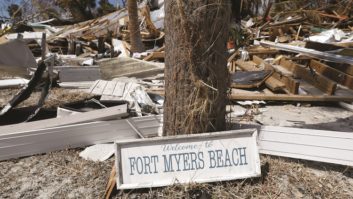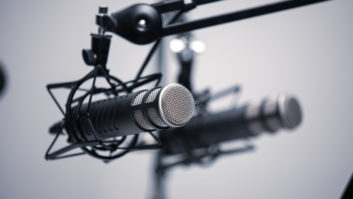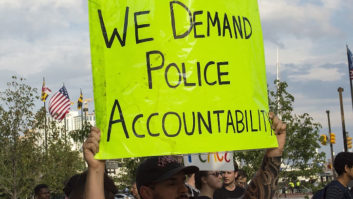The author is membership program director of the National Federation of Community Broadcasters. NFCB commentaries are featured regularly at www.radioworld.com.
One of the wildest, most furious years in some time is coming to a close. Major news stories of politics and power have dominated the culture since January. Among radio leaders, the stories are no less tumultuous; public radio legend Garrison Keillor was fired just this week over sexual misconduct charges. Add to the cycle that social media is awash with fights over matters large and small. And, with midterm elections next November, 2018 looks like more of the same.
One bright spot, however, has been the comeback of a legacy medium.
For media organizations like radio stations, 2017 has been a rough ride, with ups and downs aplenty. The ascent of Ajit Pai, Federal Communications Commission changes to the main studio rule, among other reforms, and the 50th anniversary of the Communications Act were some of the major stories this year. An underreported issue, though, was radio reasserting its place in our democracy.
If 2016 was the year of the podcast, 2017 seems to have been the year for radio to bounce back.
Sean Ross’ recent look at the reemergence of WBEL(AM/FM) in Wisconsin taps a theme we saw again and again this year. People have more media choices than ever, and are coalescing around radio as a place for everyone. Liberal or conservative, there’s a place for everyone on the dial, and that’s unusual today it seems. In an age of social media conflagration and troubling media trends, cities and town are returning to radio for a greater sense of community.

Whether it is our medium’s phenomenal growth among communities of color or National Public Radio’s spike in audience, this has been a year of headlines highlighting listener engagement. Low-power FM stations like WOWD(LP) were energized about the platform, winning national and local awards as they reached into neighborhoods like no app ever could. Public media stars such as KEXP(FM) continued to meet the streaming challenge with their evocative video work while supporting smaller stations along the way. Even commercial giants like iHeartMedia got on the offensive, debuting a podcast network this year as well as getting assertive with its place on smart speakers and mobile devices.
In spite of years’ of news reports suggesting radio would succumb to streaming, podcasting and video, both commercial and noncommercial radio were unflappable. Like Muhammad Ali going against the feared George Foreman in 1974’s legendary “Rumble in the Jungle,” they may have counted radio down. 2017 proved we were all but out.
Radio’s resilience is not for lack of adversaries. Apple Music, Spotify and Amazon Music were undoubtedly buzzier than radio, but modest growth and lingering sustainability questions might shift the tale in 2018. Exclusive deals with the likes of Taylor Swift, video ventures that flop, and, of course, streaming rates squaring up with revenue will present challenges for services that will find the long-term battle for audience tough with free options like radio and platforms such as YouTube beckoning. Veteran service Pandora’s announcement this year of a listener decline and fewer ad sales could be a harbinger of things to come.
It is easy to credit social tensions for all the renewed interest in radio. Americans seem quite divided these days and the culture wars feel like they’re in full swing. As the behemoths of the radio world. AM call-in and sports talk shows — and, as we know, sports has become its own political hotbed — generate a lot of listeners. Radio’s latest rise may thus be rightly linked to social strife. However, a desire for community amid conflict may be what’s most at play.
Discounted as it often is, community radio deserves much credit for uniting rural communities as well as those in larger cities, when finding that collegiality is simply tougher to do.
For many cities and towns, community radio cultivates a sense of pride. Such high regard comes from the fact that community radio provides a media space for local creative expression and dialog. It can be a gathering space for many residents, where those of varied life experiences, persuasions and interests can talk, learn and bond. That value might explain why changes to its mission are taken so seriously, as was the case in Newfoundland recently. In a world that is more connected than ever, nothing stokes a fight like the one for real-life places in our own backyards.
Scores of essays have explored how online interaction disconnects us from one another. In an era where tragedy and imminent civic dissolution rule that day, those stakes only go up. When communities are exposed online to more and more outrage, or current events have us seeking out one another for solace and answers, radio in a media-saturated world feels more intimate, warm and human.
Radio’s fortunes continue to look bright. People crave the closeness, context and community that radio provides. Such are age-old needs, and radio is poised to be there.












